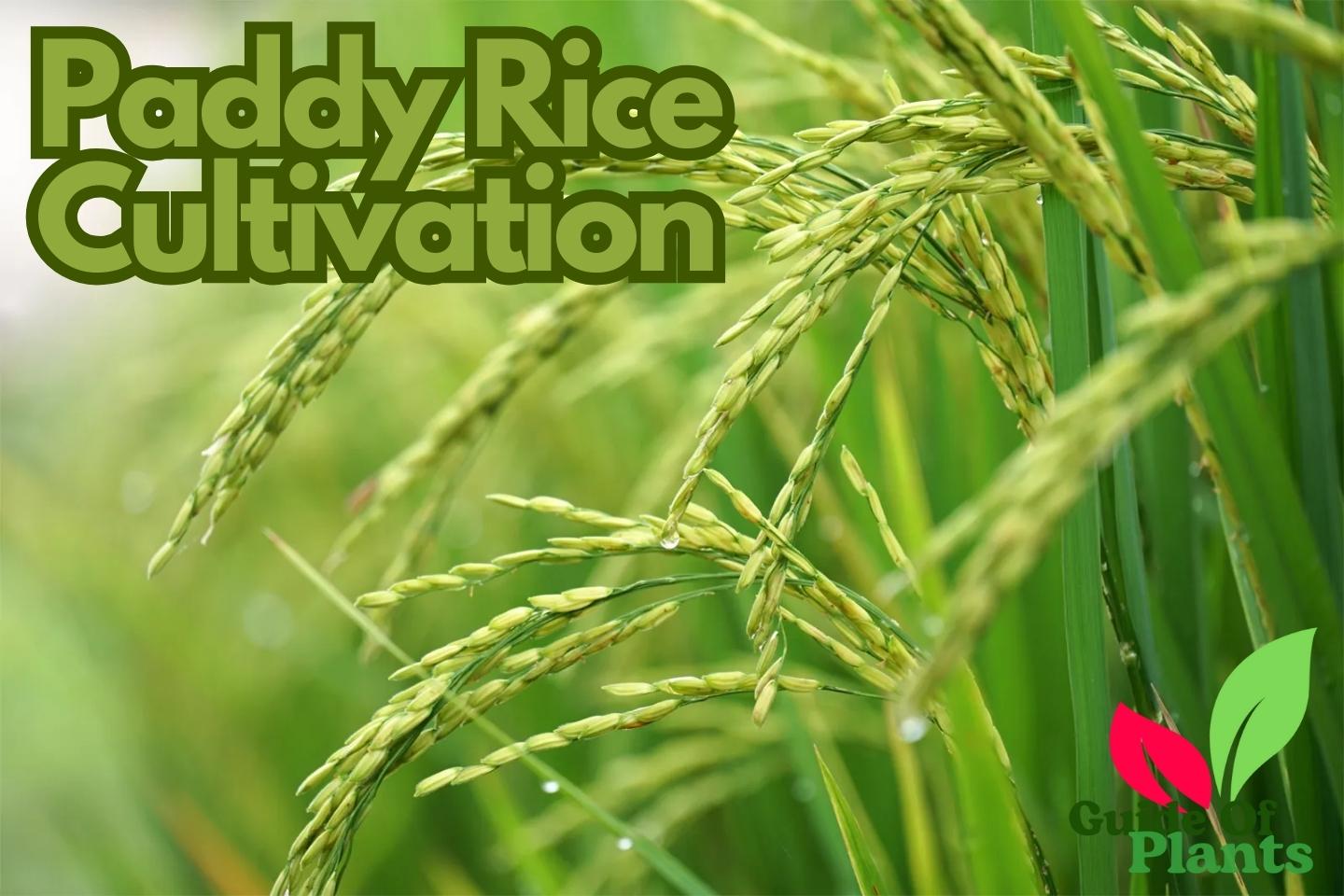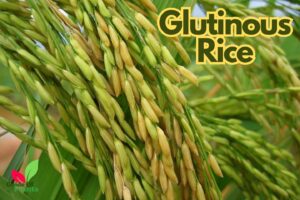Imagine endless emerald fields swaying in the breeze. The nostalgic aroma of steaming rice wafting from family meals. No wonder paddy rice nourishes over half the world’s population today. This ancient cereal grass transformed cultures and cuisine across Asia over millennia.
In this extensive guide, we’ll explore paddy rice’s history, ideal growing conditions, key steps in cultivation, storage, nutrition, and potential future developments. Whether you’re an aspiring rice farmer or simply love a good rice dish, you’ll gain a deep appreciation of all that goes into producing this staple crop. Let’s delve into the captivating world of paddy rice with Guide of Plants.
Table of Contents
Also Know About:
History of Paddy Rice

Few plants have shaped human civilization like paddy rice. Let’s trace its long journey through our shared history. Rice was first domesticated around 9,000 years ago in the Pearl River valley region of China. From there, rice cultivation spread south throughout Southeast Asia.
Rice traveled westward along the Silk Road to the Middle East, then to Europe and Africa. It spread east reaching Japan around 2,000 years ago. Beyond sustenance, rice took on sacred meaning in many Asian cultures. It remains intricately woven into traditions, festivals, and mythology.
Today, this grain is a dietary cornerstone for nearly half the global population. Its expansive history reminds us of rice’s profound impact worldwide.
Also Know About: Organic Vegetable Gardening
Ideal Conditions for Growing Paddy Rice
While adaptable, rice thrives under certain natural conditions.
Climate Needs: Rice requires hot, humid climates with temperatures between 70-95°F. Consistent rainfall or irrigation is needed to flood fields.
Flooding Requirements: Paddy rice must be grown in flooded paddies or bunded fields to allow underwater growth. Rice is semiaquatic with a tremendous capacity to adapt.
Soil Types: Clay, silty, or loamy soils with good water retention and nutrient content are best. Soil must be leveled for even water distribution.
Understanding rice’s ideal environment informs smart growing practices for productive paddy fields.
Main Varieties of Paddy Rice
Through selective breeding, rice diversified into thousands of varieties. Here are the primary types.
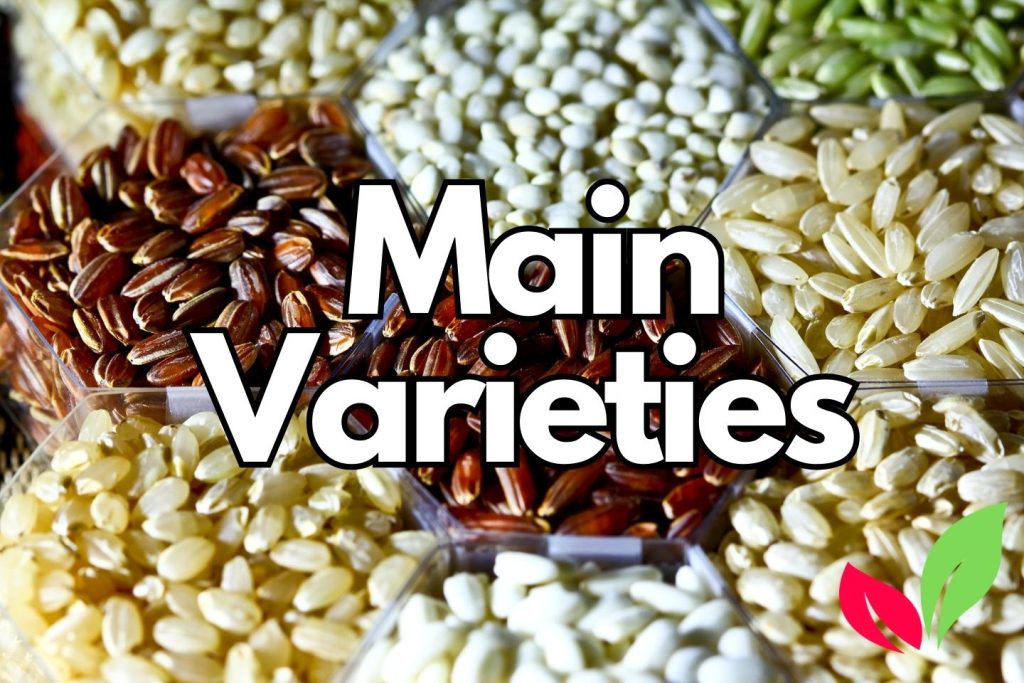
- Indica Rice – Long grain rice with fluffy, separated grains when cooked. Common in tropical regions.
- Japonica Rice – Rounder, short grains that stick together. Grown in temperate climates.
- Aromatic Rice – Specialty rice with a distinct popcorn-like aroma and flavor. Like basmati or jasmine.
- Glutinous Rice – Extremely sticky when cooked due to high amylopectin. Used in deserts and dishes like rice cakes.
Knowing grain qualities helps farmers select suitable varieties for their climate and culinary needs.
Also Know About: Herbal gardening
Planting Paddy Rice
Proper planting ensures a healthy, uniform stand of rice. Follow these tips.
Seed Selection: Choose high-yielding varieties adapted to your region and growing season. Consider disease resistance.
Nursery Preparation: Prepare seedbeds with wet soil to sprout rice seedlings for transplanting.
Transplanting Seedlings: Transplant young seedlings into paddy fields. Optimal age is 4-6 weeks old with 4-5 leaves.
Water Management: Flood fields 1-2 weeks after transplanting and maintain 5-12 cm of water until harvest.
Careful planting provides the best start for robust rice growth.
Paddy Rice Growth Stages
Understanding rice development improves crop management. Key stages include:
Vegetative Stage – Germination to tillering. Plants produce stems and leaves. Lasts 60-90 days.
Reproductive Stage – Panicle initiation to flowering. Root growth peaks. Headings with grain develop.
Ripening Stage – Milk grain to full maturity. Starch accumulation occurs. Grains ripen over 20-35 days.
Adjusting irrigation, fertilizer, and pest management for each stage optimizes outcomes.
Common Diseases and Pests
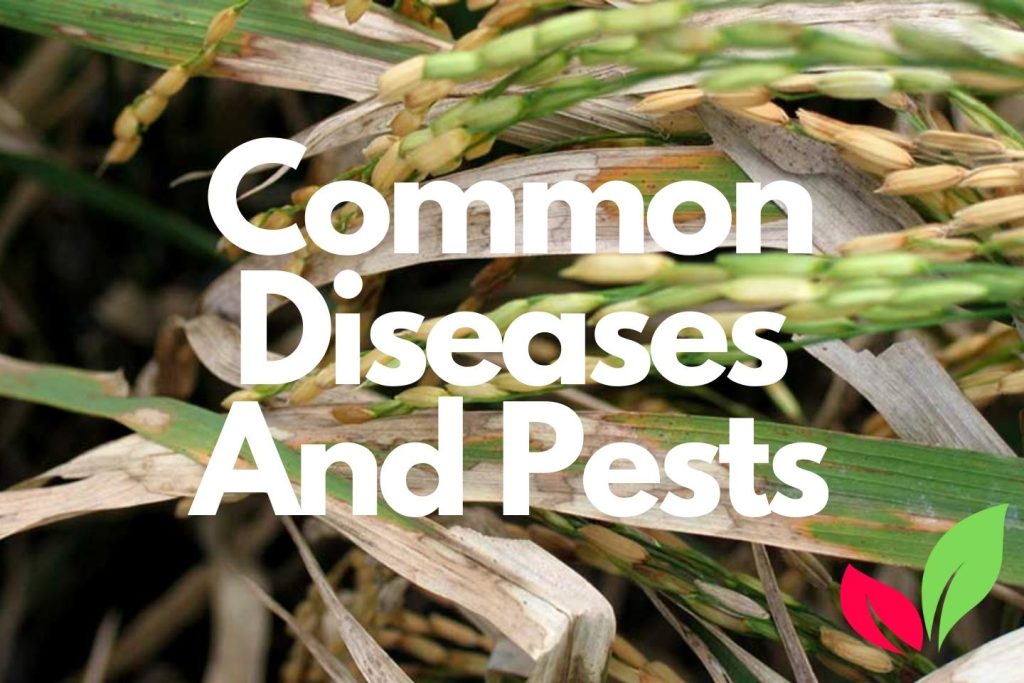
Various pathogens and pests can hamper rice yields. Here are major threats:
Bacterial Leaf Blight – Bacteria causing lesions on leaves and grains. Use resistant varieties to prevent.
Rice Blast – Fungal disease destroying leaves and panicles. Improve drainage and air flow to reduce infection.
Brown Spot – Fungal leaf spots that spread rapidly in wet conditions. Rotate rice fields and treat seeds to control.
Stem Borers – Larvae of moths and beetles that bore into stems. Maintain field sanitation to minimize infestations.
Rice Hispa – Metallic blue beetles that scour leaves. Monitor field edges for influxes and pick off adults.
Knowing disease and pest characteristics aids rapid identification and treatment.
Integrated Pest Management
Combining tactics minimizes pesticide use for plant and environmental health.
- Resistant Varieties – Plant rice bred for resistance to common pathogens in your area.
- Field Sanitation – Promptly remove disease infected material and weed alternate hosts.
- Biological Controls – Encourage predators like spiders to manage pests naturally.
- Pesticides – Use selective products sparingly when needed, not on a fixed schedule.
An integrated approach reduces reliance on chemicals for sustainable rice farming.
Harvesting Paddy Rice

Timely harvesting and processing maintains rice quality. Follow these steps:
Identifying Maturity: Grains are ready around 20-50 days after flowering depending on variety. Look for yellow, drooping panicles.
Manual Harvesting: Small farms harvest rice using hand sickles. Cut panicles, bundle, then thresh grains.
Mechanical Harvesting: Larger operations use specialized combines to cut, thresh, and clean rice in one pass.
Drying and Threshing: Dry cut rice to 14% moisture content. Thresh and winnow to separate grains from hulls.
Proper harvesting ensures maximum grain yield and profitability.
Milling Paddy Rice
Milling transforms raw paddy into polished, edible rice. Here’s the process:
Removing the Hull: First the outer hull or husk is removed leaving brown rice kernels.
Milling Regimes: Brown rice is milled to remove bran layers, achieving white rice. Duration impacts nutrient loss.
Milled Rice Grades: More complete milling produces more refined grains and higher quality grades.
Milling extent balances shelf life with nutrition retention. Unmilled rice deteriorates rapidly.
Paddy Rice Storage
Effective storage protects quality from pests, mold, and moisture damage.
Drying Rice: Dry milled rice to 12-14% moisture based on variety. Higher moisture causes spoilage.
Storage Containers: Store rice in clean, dry bins. Plastic, steel, or wood materials work well.
Temperature Control: Keep rice between 32-50°F to prevent insect and microbiological activity during storage.
Proper storage preserves rice quality and minimizes waste for farmers.
Sustainable Paddy Rice Production
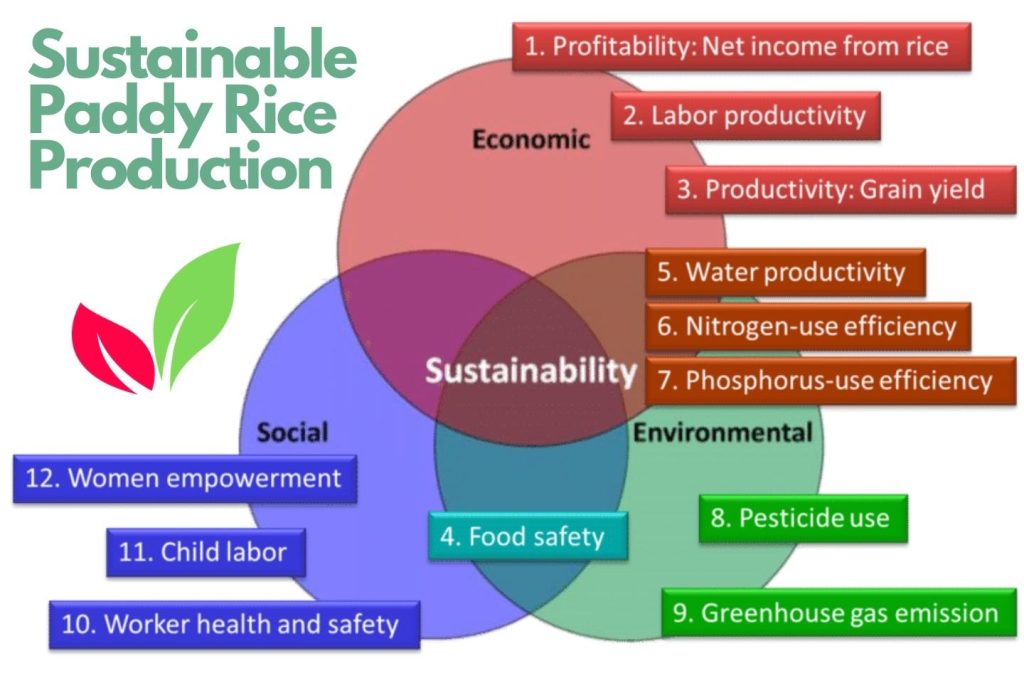
Innovations can reduce environmental impacts and increase small farmer yields.
Water Management: Alternate wetting and drying irrigation cuts water use while increasing yields.
Organic Practices: Eliminating synthetic inputs improves soil health and reduces pollution long-term.
System of Rice Intensification (SRI): This methodology maximizes yields for small farmers through new planting and growing techniques.
Adopting sustainability practices benefits both rice growers and the environment.
Paddy Rice Nutrition
The nutritional value of rice depends on milling extent, grain type, and enrichment.
Macronutrients: Rice provides carbohydrates, some protein, and trace fats. White rice is mostly starch.
Micronutrients: Brown rice contains more vitamins, minerals, and fiber lost when milling to white rice.
Health Benefits: As a good source of carbs and certain B-vitamins, rice supports energy production and metabolism.
While not the most nutrient-dense grain, rice nourishes people economically across the globe.
Paddy Rice Dishes and Cuisine
This versatile cereal transcends staple status in countless regional dishes.
Rice as Staple Food: The number one direct human use of rice is as an affordable carb and calorie source.
Regional Cuisines: Cultures worldwide developed signature rice dishes like risotto, sushi, pilaf, and red beans and rice.
Cooked Rice Varieties: Preparation techniques produce varied textures from fluffy, separated grains to sticky, cohesive rice.
Rice’s diversity drives culinary innovation and nourishment beyond basic nutrition.
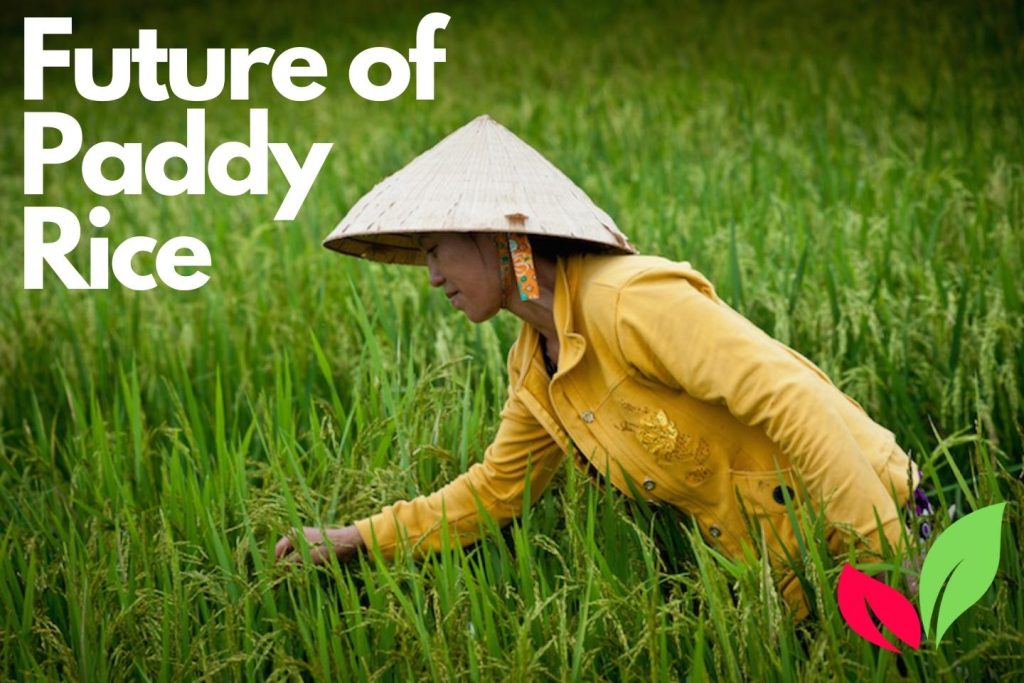
Future of Paddy Rice
Advances aim to boost sustainability and feed a growing population.
- Higher Yields: Breeding focuses on greater yield potential and heat tolerance for changing climates.
- Climate Resilience: Varieties adaptable to drought, floods, and saline soils can stabilize production.
- Biofortification: Enhancing rice’s nutrient composition addresses malnutrition.
Paddy rice will remain a staple crop supporting future generations if sustainability guides progress.
Also Know About: Bonsai Gardening
Conclusion
In this extensive journey through paddy rice cultivation, we explored the critical steps in producing this nourishing cereal grain: from planting to harvest and milling to storage. Key practices like water management, integrated pest control, and sustainable innovations can enhance both farmer livelihoods and food security.
While growing paddy rice requires immense knowledge passed down generations, the basic principles remain universal. We hope this guide provided enlightening context showing rice is far more than just a staple grain. Our shared future relies on rice farmers continuing to perfect techniques honed over millennia.

